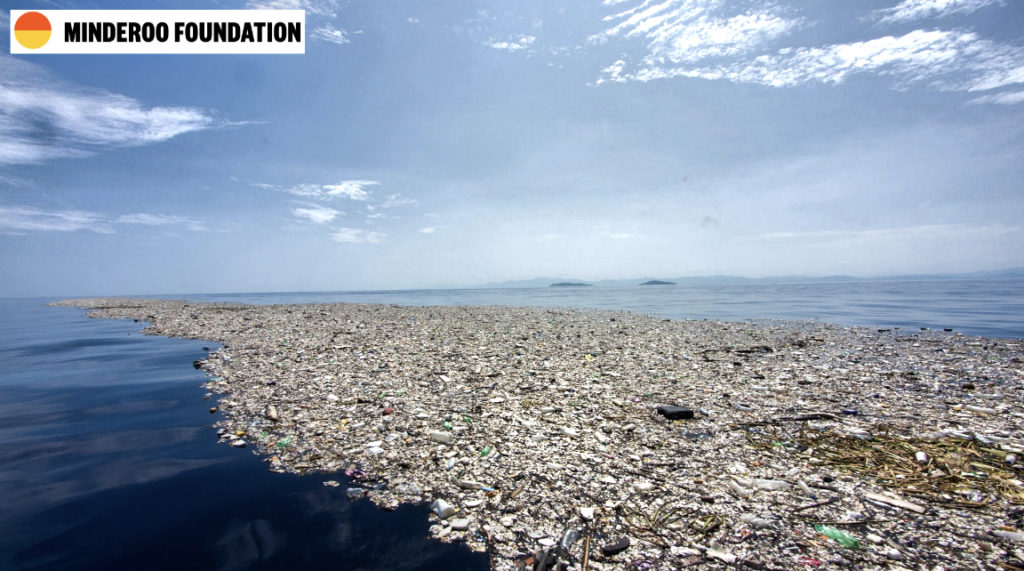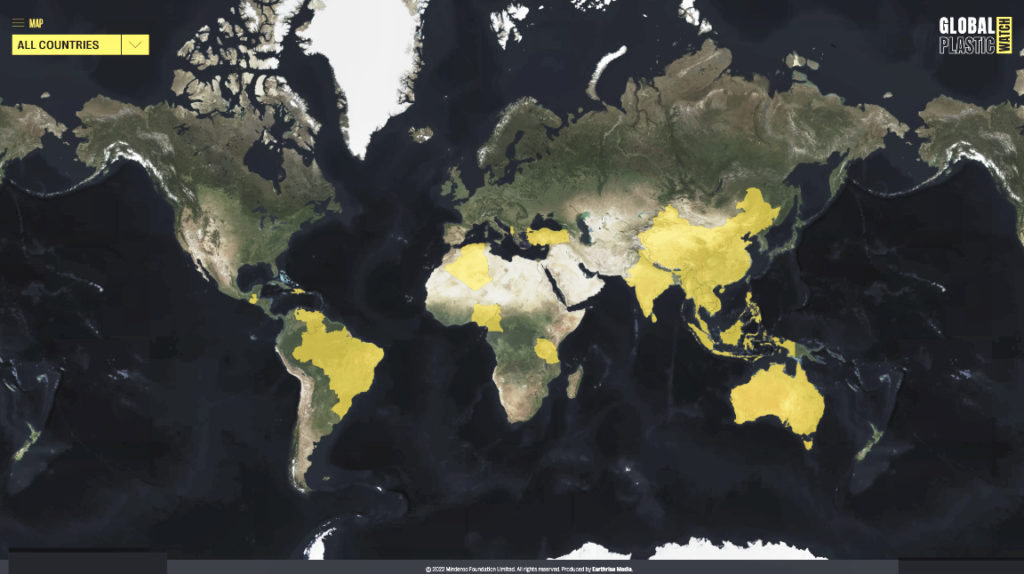
A cutting-edge, new tool developed by Minderoo Foundation has identified thousands of waste sites across 25 countries for the first time using advanced satellite data technology and machine learning (ML) to measure piles of plastic waste from space.
Global Plastic Watch is a tool which combines Earth Observation (EO) with Artificial Intelligence (AI) to create the first-ever, near-real-time, high-resolution map of plastic pollution. This is the largest open-source dataset of plastic waste across dozens of countries. The aim of the tool is to help authorities to better manage plastic leakage into the marine environment.

Global Plastic Watch uses remote sensing satellite imagery from the European Space Agency (ESA) and a first-of-its-kind, machine learned model created in collaboration with award winning Digital Product Agency for the Environment, Earthrise Media. The tool is able to determine the size and scale of land-based plastic waste sites, a major factor in fueling the growing problem of plastic pollution of the world’s rivers and oceans.
The data gathered provides a historical first and authoritative insight into one of the world’s most intractable environmental challenges – a deluge of plastic pollution that is threatening the oceans, harming communities, marine life, animal and human health. By using it, governments, industry and communities can evaluate and monitor the risk of land-based plastic waste sites, as well as prioritise investments in solutions.
The countries mapped so far include all of South-East Asia, Australia and the countries identified by research published in Science Advances as accounting for high rates of plastic emissions into the ocean.
Dr. Andrew Forrest AO, Chairman and Co-Founder of the Minderoo Foundation, described data and transparency as important tools to fight plastic waste, and until now, it has been difficult to effectively identify and measure plastic waste build-up in a systematic, standardized way. “Generally, the world has no idea how dangerous plastic waste is to the organic environment, particularly humans. The destination for every piece of plastic is nano-plastic, which has both poisonous and cutting attributes able to mutilate cells and even penetrate the human blood brain barrier,” he said. “Preventing illegal and legal plastic waste stockpiles entering the oceanic environment is critical to limit this harm. Once in the ocean, through both mixing, absorption and ingestion by animals, this plastic will officially enter the human environment.”
Using AI and satellite data, Minderoo Foundation has produced the first-ever map of plastic waste build up. Most of the data about plastic waste comes from models and estimates. Now this understanding is informed by real data that can be used to guide solutions.
“Global Plastic Watch arms governments and researchers around the world with data that can better guide effective waste management interventions, ensuring land-based waste doesn’t end up in our oceans,” Dr. Forrest said. “We want to work with governments to ensure this tool can also help to support policy change where needed.”
Dr. Fabien Laurier, Lead for Technology and Innovation, and Ocean Conservation at Minderoo Foundation said some of the Global Plastic Watch findings were surprising. “We know that land-based leakage contributes up to 91 per cent of the plastic waste that enters the ocean,” Dr Laurier said. “Global Plastic Watch has revealed that many large-scale waste sites across the first 25 countries we have mapped were previously undocumented and the number of sites is much higher than expected.”
The government of Indonesia is working with Minderoo Foundation to increase its recycling capacity to double recycling rates by developing capacity for an additional one million tons per year by 2025.
Dr. Nani Hendiarti, Deputy for Environment and Forestry Management Coordination, Coordinating Ministry for Maritime Affairs and Investment, Indonesia, congratulated Minderoo Foundation on the public launch of the Global Plastic Watch. “Global Plastic Watch is very helpful for identifying undocumented or illegal waste dump sites in Indonesia,” Dr. Hendiarti said. “That has enabled us to prioritise areas in need of better waste management policies and actions. Therefore, it plays an integral role in accelerating the government’s waste management achievements across all regions in the country.”
Indonesian National Plastic Action Partnership (NPAP) Chair, Sri Indrastuti Hadiputranto, said tackling the challenge of plastic pollution in Indonesia, like in many other places in the world is going to require a collaborative effort from the public, private and civil society sectors, and its measurement is without exception. “Global Plastic Watch is a data aggregator and monitoring platform on plastic waste,” Ms. Hadiputranto said. “It’s a timely innovation for policymakers, practitioners and advocates that believe in the importance of evidence-based policy making to advance our goal in reducing 70 per cent of ocean leakage by 2025. I believe more data-oriented innovations like Global Plastic Watch will lead us to a more sustainable policy outcome and improving collaborations in data collections in Indonesia.”
Global Plastic Watch is a tool aimed at supporting country-level efforts to understand the magnitudes and effects of land-based plastic waste sites, to enable them to better address undocumented sites and monitor those that pose environmental and health concerns. The data is also expected to guide direct investments in waste infrastructure in the areas that need it the most.
The development of the Global Plastic Watch tool follows the Plastic Waste Makers Index released in 2021, that revealed the true scale and sources of the global plastic waste crisis.
Globally, a 30 percent increase in the production of single-use plastic is projected over the next five years. The Minderoo Foundation No Plastic Waste initiative believes this growth in production will lead to an extra three trillion items of throwaway plastic waste by 2025.
Global Plastic Watch will continue to work with partners to refine the AI model and technology to further increase its accuracy as it expands its coverage to new sites and countries throughout 2022.

